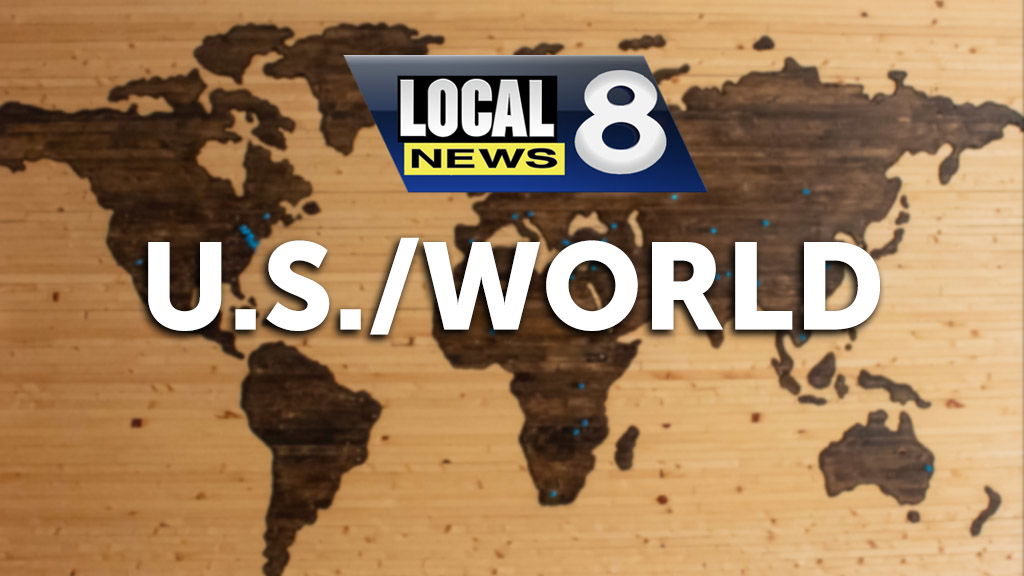Government power in the US is a swirl of checks and balances, as a recent Supreme Court ruling shows

Associated Press
NEW YORK (AP) — The delegates at the 1787 Constitutional Convention were trying to create a new governing framework for the fledging United States of America. They knew they needed SOMEONE to be at the helm of the federal government.
Someone had to be in position to see that the laws legislated by Congress “be faithfully executed,” to make treaties, to be the military’s commander-in-chief, to preside over the nation. You know, a president.
But they didn’t want to risk creating a new autocrat. After all, they had just fought a war to get away from one. Many of the fundamental responsibilities — making laws, collecting taxes, declaring war — were put under the purview of Congress, itself split into two chambers as a way to manage authority among the states. The federal judiciary, the Supreme Court, was also made independent. The powers would be balanced.
Where something starts, though, isn’t always where it stays, as America’s history since the convention that created the U.S. Constitution shows. Through the centuries, as the country expanded from 13 states to 50, as the roles and responsibilities of government expanded through wars and social change and changing global realities, the powers that the branches of government pushed to have for themselves and in relation to each other have made checks and balances a moving target.
A new development in the realm of presidential power
That was on display yet again this month, when the Supreme Court displayed its own power as it ended a hugely significant term with a 6-3 decision that in turn broadened presidential power by saying former presidents had widespread immunity from criminal prosecution for acts undertaken while they were in office.
For the framers of the Constitution, “generally the idea was, we need each of the branches to be strong enough to protect themselves against being overwhelmed by the others,” says Andrew Rudalevige, professor of government at Bowdoin College.
That meant including things like presidential veto power over legislation, and also the 2/3 majority vote from the houses of Congress that could override that veto.
But in comparison to Congress in the country’s early years, “the presidency was a very weak institution,” says Benjamin Ginsberg, professor of political science at Johns Hopkins University, who pointed out that Congress initially didn’t even give the president money to pay for household staff.
Framers “knew you needed an executive. They knew that, for example, if the country was attacked, you couldn’t wait for Congress to convene and decide what to do, you needed someone who could act,” he says. “On the other hand, they were very concerned about creating a king.”
Of course, those holding the office weren’t willing to be mere caretakers. Article II of the Constitution said executive power would be vested in the president but didn’t specify what those powers specifically were, and so presidents began to define them. Rudalevige cites Andrew Jackson, who expanded how and when veto power was used during his presidency.
It was the 20th century, though, that really saw the increase in the power of the presidency, particularly through the New Deal era under Franklin D. Roosevelt and World War II. The government expanded through social programs, financial reforms and regulations to get out from under the Great Depression, all of which needed administering.
That didn’t happen by itself, of course; Congress passed legislation that allowed it to be so, statutes that various federal agencies were charged with coming up with rules for if the laws didn’t include specific instructions. In effect, that was ceding power to the executive branch.
“Where Congress has failed is keeping up with the presidency on these things,” says William Antholis, president and CEO of the Miller Center at the University of Virginia, which studies the country’s executive office.
Congress “could be much more explicit in its rulemaking and not hand over the rulemaking to the executive branch,” he says.
The high court’s role is significant
The Supreme Court played a role as well. It staked out some of its own ground in the Marbury vs. Madison decision of 1803, which established judicial review — the principle that the court had the power to overturn laws it deemed unconstitutional.
At times, the court has allowed for the federal government and its regulatory agencies to be the ones making the rules, as in 1984 in a ruling known as the Chevron doctrine. In others, it has clamped down on regulatory power, as it did late last month in overturning Chevron. In recent years, it overturned legal precedents in abortion access and affirmative action in higher education.
In actuality, compared to other countries, the power of the American presidency as framed in the U.S. Constitution is in some ways much more limited, says Zachary Elkins, associate professor of government at the University of Texas at Austin and co-director of the Comparative Constitutions Project. The president, for example, can’t make laws or disband Congress.
That doesn’t mean presidents haven’t tried to get their agendas pushed through, whether it’s by executive orders and signing statements when it comes to policies and programs, or pushing their choices for who they want to see on the federal bench and the Supreme Court, or stepping into the space created by seismic events like the Civil War or the Sept. 11 attacks to take action.
“Presidents push,” Rudalevige says. “Sometimes Congress just doesn’t push back. Then the boundary moves.”
